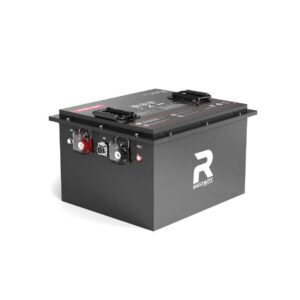What Are the Top Golf Cart Battery Manufacturers in China?
China’s top golf cart battery manufacturers include Guangzhou Beilangsi Power Source Co., Beijing Shengtong Liyuan Technology, and Zhenjiang Ruibo Power Co. These companies specialize in lead-acid and lithium-ion batteries for electric vehicles, offering voltages ranging from 6V to 72V with capacities up to 270Ah. Key players like Beilangsi provide maintenance-free deep-cycle batteries optimized for brands such as LVTONG and ClubCar, with advanced charging systems and ISO-certified production standards.
How Do Chinese Golf Cart Batteries Compare in Voltage and Capacity?
Chinese manufacturers produce golf cart batteries in 6V, 8V, and 12V configurations, often combined in series to achieve 36V, 48V, or 72V systems. Capacity ranges from 160Ah to 270Ah, with 5-hour discharge rate (5HR) being the industry standard. For example, Beilangsi’s 3-EV-210 model delivers 210Ah at 6V, while Ruibo Power offers 12V lithium-ion units with 200Ah capacity, achieving 1,500+ charge cycles at 80% depth of discharge.
| Voltage | Configuration | Typical Capacity |
|---|---|---|
| 6V | Single unit | 160-210Ah |
| 12V | Series x4 | 180-240Ah |
| 48V | Series x8 | 200-270Ah |

What Are the Key Differences Between Lead-Acid and Lithium-Ion Options?
Lead-acid batteries dominate 78% of China’s golf cart market due to lower upfront costs (¥560-¥750 per unit), but require monthly maintenance. Lithium-ion alternatives cost 2-3× more initially but provide 3× longer lifespan (8-10 years), faster charging (4 hours vs 8 hours), and 40% weight reduction. Top manufacturers like Samsung SDI and EnerSys now offer IP67-rated lithium batteries with built-in BMS for thermal protection.
| Feature | Lead-Acid | Lithium-Ion |
|---|---|---|
| Cycle Life | 500-800 cycles | 1,500-3,000 cycles |
| Energy Density | 30-50 Wh/kg | 100-265 Wh/kg |
| Maintenance | Monthly watering | None |
How Do Environmental Regulations Impact Battery Production?
Since 2023, China’s GB/T 37281-2019 standards mandate 98% lead recovery rates and VOC emissions below 0.5mg/m³. Manufacturers must use closed-loop water systems and robotic welding to reduce workplace lead exposure. The 2025 Carbon Peaking Action Plan incentivizes lithium-ion R&D through 15% tax rebates, driving companies like GS Yuasa to develop graphene-enhanced anodes with 30% higher energy density.
New compliance requirements have pushed 60% of smaller manufacturers to adopt automated production lines. Facilities must now install real-time emission monitoring systems linked to provincial environmental bureaus. For lead-acid producers, the revised “Extended Producer Responsibility” rules require battery collection rates of at least 90% by 2026. This has accelerated partnerships between manufacturers like Tianneng Battery and recycling networks to create circular supply chains. Lithium battery makers face stricter controls on cobalt sourcing, with 85% now using blockchain-based mineral tracking systems.
What Emerging Technologies Are Shaping the Industry?
Cutting-edge developments include carbon-foam lead batteries (C&D Technologies) with 2,000-cycle lifespans and fast-charge lithium titanate (LTO) cells from Leoch International. Smart batteries with IoT connectivity now feature in 23% of premium models, enabling real-time SOC monitoring via Bluetooth. Hybrid systems combining solar charging and ultracapacitors are emerging for resort vehicles, reducing grid dependence by 40%.
Recent breakthroughs include semi-solid state lithium batteries achieving 400 Wh/kg energy density in prototype stages. Companies like CATL are testing aluminum-air batteries for golf carts, promising 1,600km range per charge. Wireless charging pads embedded in parking bays are being trialed at 15 Chinese golf resorts, cutting charging times by 70% through 30kW induction systems. Manufacturers are also experimenting with self-healing electrodes that repair micro-cracks during idle periods.
Chinese manufacturers now produce golf cart batteries rivaling global brands in quality but at 35% lower cost. The shift to AGM (Absorbent Glass Mat) lead-acid technology allows maintenance-free operation while retaining deep-cycle capabilities. However, proper charging practices remain critical—we recommend temperature-compensated chargers to prevent sulfation in subtropical climates.”
— Redway Power Solutions Engineer
Conclusion
China’s golf cart battery sector combines cost efficiency with advancing technology, offering solutions from entry-level flooded lead-acid to premium lithium systems. Buyers should prioritize certified manufacturers meeting GB/T 50081-2022 safety standards while considering total lifecycle costs rather than just initial pricing.
FAQ
- How often replace golf cart batteries?
- Lead-acid: 3-5 years; Lithium: 8-10 years
- Cost to replace 48V system?
- ¥8,500-¥12,000 for lead-acid; ¥25,000-¥35,000 for lithium
- Maintenance requirements?
- Lead-acid: Monthly water top-ups; Lithium: Annual BMS checks
